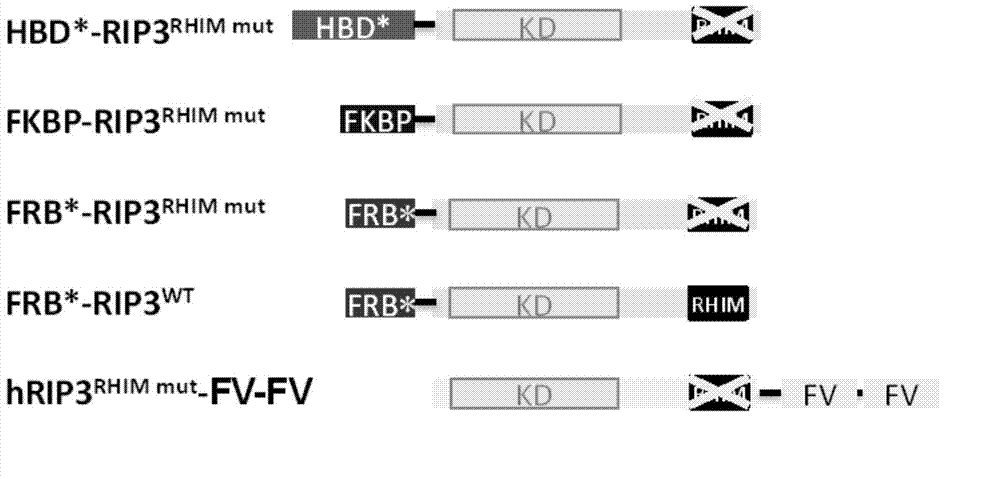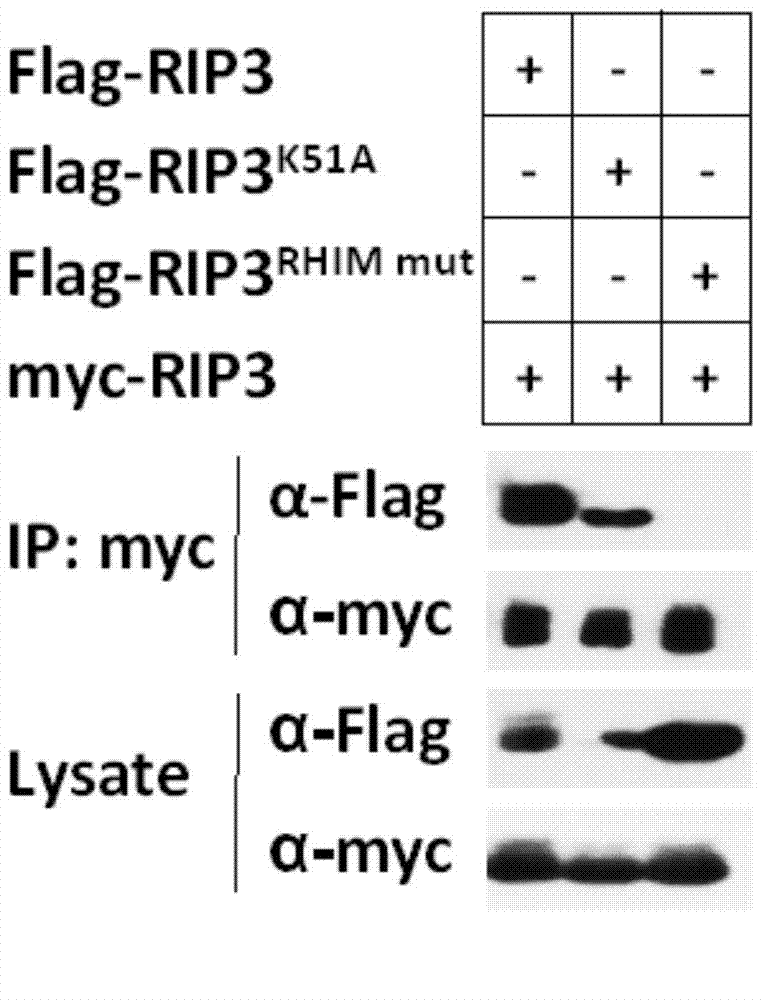Method for inducing programmed cell necrosis artificially
A technology of programmed necrosis and cell generation, applied in biochemical equipment and methods, genetic engineering, botanical equipment and methods, etc., can solve problems such as unclear heterologous polymer signal transmission
- Summary
- Abstract
- Description
- Claims
- Application Information
AI Technical Summary
Problems solved by technology
Method used
Image
Examples
Embodiment 1
[0025] 1) Design and optimize the aggregation system.
[0026] Since the dimerization / multimerization linker used in the present invention is a protein endogenously expressed in cells, in order to avoid endogenous interference, the present invention has been optimized and modified according to the following documents:
[0027] Littlewood TD, Hancock DC, Danielian PS, Parker MG, Evan GI. A modified oestrogen receptor ligand-binding domain as an improved switch for the regulation of heterologous proteins. Nucleic Acids Res 1995, 23(10):1686-1690.
[0028] Pollock R, Giel M, Linher K, Clackson T. Regulation of endogenous gene expression with a small-molecule dimerizer. Nat Biotechnol 2002, 20(7): 729-733.
[0029] Clackson T, Yang W, Rozamus LW, Hatada M, Amara JF, Rollins CT, et al. Redesigning an FKBP-ligand interface to generate chemical dimerizers with novel specificity. Proc Natl Acad Sci U S A 1998, 95(18): 10437-10442 .
[0030] It includes four parts:
[0031] a. For H...
PUM
 Login to View More
Login to View More Abstract
Description
Claims
Application Information
 Login to View More
Login to View More - R&D
- Intellectual Property
- Life Sciences
- Materials
- Tech Scout
- Unparalleled Data Quality
- Higher Quality Content
- 60% Fewer Hallucinations
Browse by: Latest US Patents, China's latest patents, Technical Efficacy Thesaurus, Application Domain, Technology Topic, Popular Technical Reports.
© 2025 PatSnap. All rights reserved.Legal|Privacy policy|Modern Slavery Act Transparency Statement|Sitemap|About US| Contact US: help@patsnap.com



